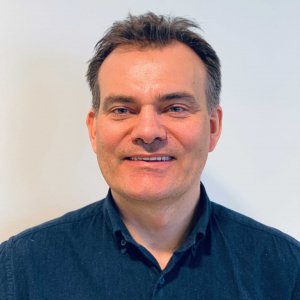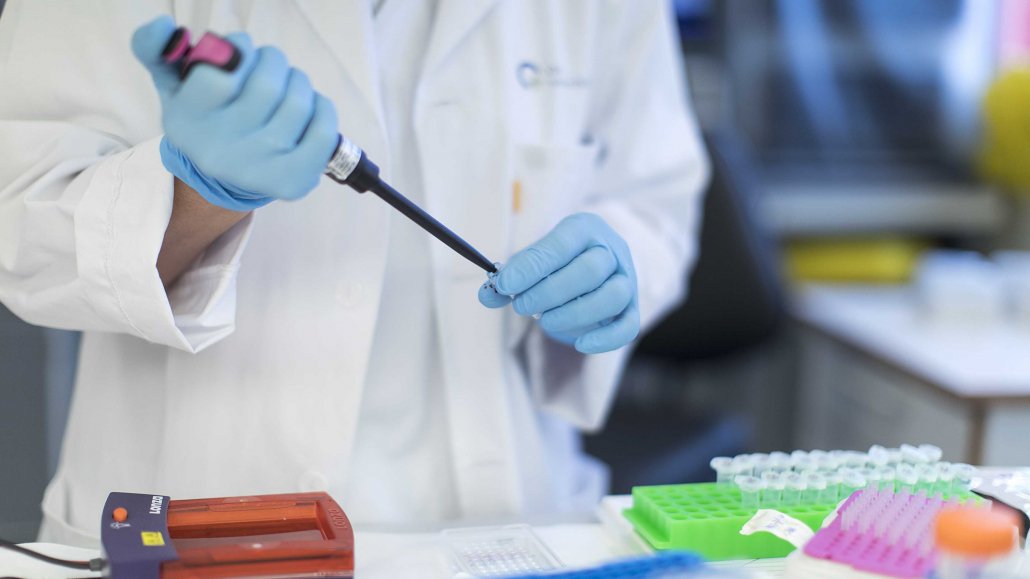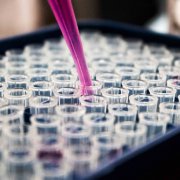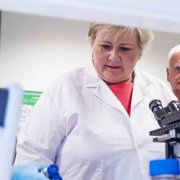How will biobanks accelerate cancer research?
Biobanks – the powerful tools in cancer research you may have never heard of.
Biobank Norway is a national research infrastructure that comprises all public biobanks in Norway and represents one of the world’s largest existing resources within biobanking. They are also a member of Oslo Cancer Cluster, through NTNU, and represent an exciting initiative in the endeavour to develop precision medicine.

Christian Jonasson, seniorforsker ved NTNU.
Christian Jonasson, the Industry Coordinator for Biobank Norway, connects businesses with Norwegian biobanks to accelerate medical research. He said that more biobanks now work with the health industry and benefit from added value in the process.
“It is the health industry that will ultimately bring new therapies to patients.”
Christian Jonasson
Biobank Norway has developed several strategic areas for Norwegian biobanks. They have built automated freezers for secure long-term storage, with advanced robotised systems that can retrieve barcoded biological samples. They have initiated new biobanks, established new IT systems and also developed policies for public-private collaborations. Also, they have contributed to strategic processes that promote increased utilization of Norwegian health data, including the national Health Data Program.
Ultimately, Biobank Norway aims to facilitate collaborations between the global health industry and Norwegian biobanks to accelerate innovation in the life sciences, disease prevention and treatment.
“Biobanks are one of the most important tools in precision medicine.” Christian Jonasson

Biosamples may be used for important, life-saving cancer research. For example, to develop new immunotherapies, such as T cell therapy. Photograph by Christopher Olssøn
A competitive edge
Norway has been collecting biological samples for the last 30-40 years. For example, one of the world’s largest birth cohort studies, the Mother and Child study (called MoBa) was initiated in 1999. It included 100 000 newborns with mother and father, which totalled over 285 000 participants over a ten-year period. There are numerous other Norwegian health studies, which have involved hundreds of thousands of people, such as the HUNT study and the Tromsø study.
Moreover, the Norwegian Radium Hospital have collected countless valuable samples from cancer patients over the years from both regular clinical care and from clinical research studies. Hospitals across Norway also continually collect and save diagnostic samples, which may be used for medical research at a later stage.
The number of biobanks and the rigorous collection of clinical data in health registers in Norway represent unique assets for medical researchers.
“Norway has a competitive edge on its health data infrastructure.” Christian Jonasson
Sharing the data
However, Jonasson also points out that the health registers in Norway are too fragmented. To combat the problem, Biobank Norway are helping the Norwegian Directorate of eHealth to develop a Health Data Program. The digital platform, called the Health Analytics Platform (HAP), will collate copies of relevant data from the various health registers, providing a single point of easy access for researchers.
Biobank Norway also has a long-term vision to collect all biobank data and health data in a common platform. This is a necessary step to unleash a larger national precision medicine initiative. First, they want to organise the data from the four largest population-based cohort studies in one place. In a couple of years, this database would hopefully include 400 000 people, which is a very attractive cohort for medical research.
“We need to attract leading actors from the international health industry and Norwegian start-ups in real collaborations with biobanks.” Christian Jonasson
Important medical research is already being conducted in biobanks across Norway. Jonasson said that there now needs to be a plan to market Norwegian health data and biobanks internationally to spur innovation further.

Biosamples are also used for sequencing of the human genome, to develop more precise diagnosis and treatment of cancer.
The hidden key
To unlock the potential of biobanks, the biological samples need to be analysed and converted into meaningful data, which can be an expensive and laborious process.
Finland, for example, has begun to collect biological samples from 500 000 individuals. One single database holds all phenotypic data, such as diagnosis and treatment, and all genotypic data, which is the mapping of the human genome.
In the UK, there is the Genomics Project, which has already sequenced the DNA (the coded parts of the human genome) of 100 000 patients. The UK Biobank are aiming to sequence the DNA of half a million brits.
Jonasson hopes that such ambitious initiatives will be imported to Norway to build the biobank infrastructure further and provide meaningful data for medical research. He adds that public-private collaborations will be key to drive and fund such large scale initiatives.
Biobank Norway is currently in the process of extending into its third phase and aims to continue to improve the biobanks, the partner institutions and global research collaborations in the future.
- Do you need help with your research and innovation project using biobanks in Norway?
E-mail Christian Jonasson. - For more information, please visit the official website of BioBank Norway.

 Louis Reed / Unsplash
Louis Reed / Unsplash
 Gunnar Kopperud
Gunnar Kopperud Unsplash
Unsplash







